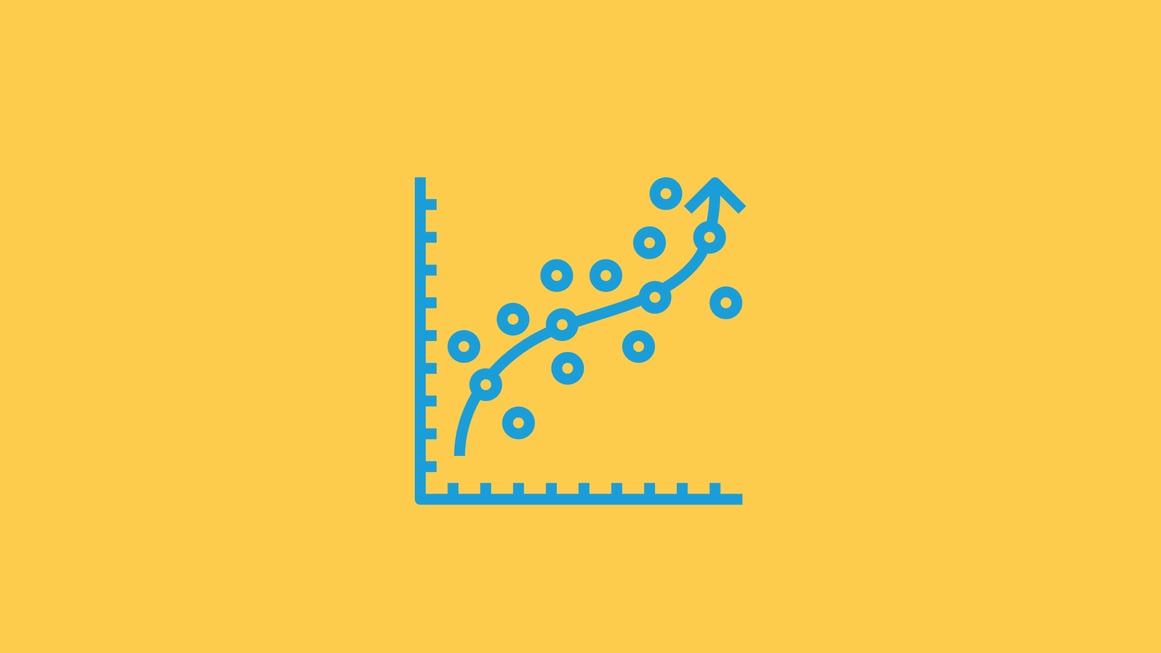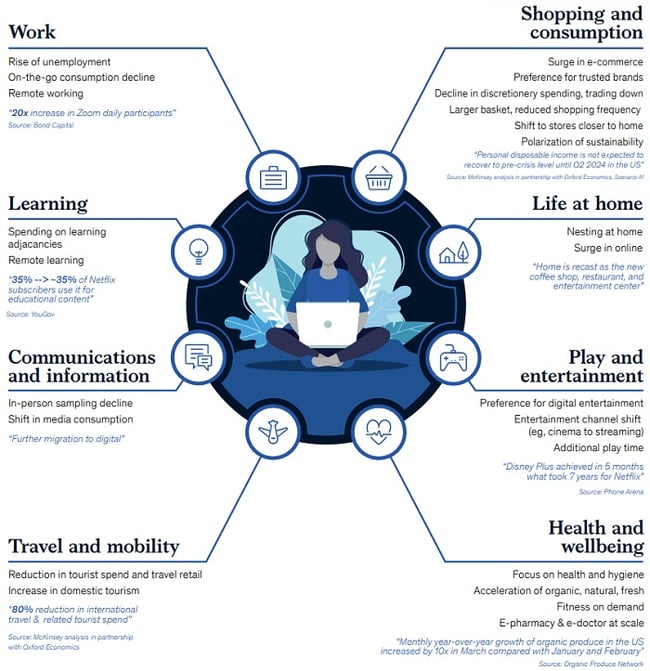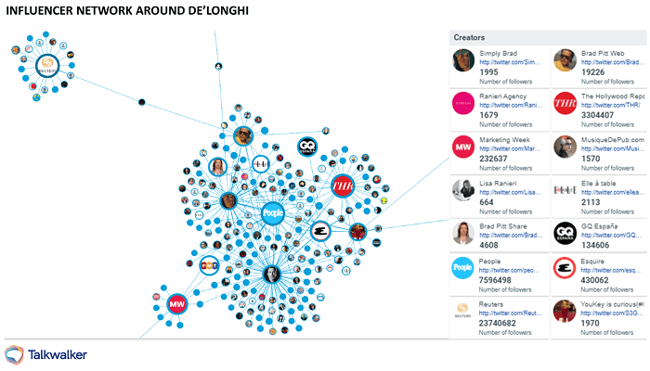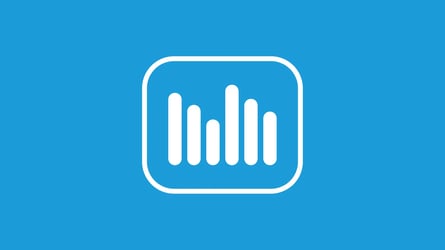- Are you worried that you're using out-of-date or inaccurate data to make business decisions?
- Do you struggle to back up your trends report so stakeholders understand its importance?
- How much pressure are you under to find the next opportunity in the market?
- Do you have sleepless nights worrying that you're missing a major trend?
- Is your data analytics platform falling short?
- Would you like a crystal ball?
Your pain is real. Your entire organization is relying on you to provide relevant insights, to enable informed decision-making.
Check out this post. It'll equip you with analytics and data expertise.
You'll be able to present the latest industry and global trends intelligence. Both to your board and technical/non-technical audiences. Along with performance measurement and reporting that you can share across your entire company.
Understanding how the past affects the future is necessary across all industries. This is why trend analysis, like predictive analysis and cash flow forecasting, is essential.
Trend forecasting will help you to…
- Monitor emerging market trends
- Find new market opportunities
- Create data-driven business strategies
- Identify which products will be in high demand
- Develop a consumer insights strategy based on business goals
- Analyze the impact of trends in your brand and industry
- Understand the social values that matter to consumers
- Turn research findings into actionable insights
- Benchmark against your competitors
What is trends analysis?
Trend analysis is the process of predicting what will happen, based on historical data.
It provides you with information regarding marketing and sales performance, product development, spending, and more. Enabling you to make data-driven decisions about future events.
For example… retailers can use consumer trend analysis to find patterns in revenue and drops in sales. Whether that’s for particular products, specific demographics, or locations.
If your business only monitors current trends, you risk basing decisions only on what’s popular now. This is not sustainable. Consumer behavior and perceptions can change in the blink of an eye.
In marketing, for instance, analyzing emerging trends ensures that your content strategy will evolve to attract your target audience. Concerning product development, you’ll be able to predict what consumers want and be ready to launch.
Trends can be slow burners, meaning that constant monitoring is essential, so your business can evolve. Ignore these trends and your business will have to battle to catch up, or disappear.
Your consumer trend analysis strategy will also show you when a trend is losing its sparkle. This means you can realign your efforts without losing traction.
Monitoring both traditional media and social media will give you the full picture. What consumers are talking about and how much engagement those conversations are getting. Increases in traffic or shifts in demographics are crucial to your competitive advantage.
But, trends aren’t always positive things you can steer your business towards. Your trend analysis will also reveal potential threats or a looming crisis. The earlier you spot these, the quicker you can prepare and protect your brand.
Trend analysis example
In the stock market, trend analysis helps predict future stock price movements using recently observed trend data points. Forecasts and trend lines use historical data such as price movements.
An investor will profit if done well.
Consumer Trend Analysis post COVID
There aren’t many businesses that didn’t take a hit during the pandemic. Some industries suffered worse than others, with lockdowns closing restaurant doors and grounding flights. How will brands plan for an uncertain future?
Customer trend analysis from 2019 is redundant. 2020 and 2021, won’t do you much good either. Even 2022 is becoming a distant memory.
Consumer behavior changed. It had to. And, it continues to adapt to our off-kilter world.
Trends analysis is the only way forward if you want your business to survive.
According to McKinsey, new behavior has emerged across eight areas of life.
For instance, an 80% reduction in international travel and related tourist spending.
McKinsey report - How COVID-19 changed consumer behavior.
We’re still seeing the impact of these consumer changes. Remote working is now a major aspect of employment. While the video game industry is now making more money than the movie and music industries combined.
How businesses use trend analysis
Trends keep your brand relevant and avoid off-key marketing messages. To read the room… you have to listen to global conversations. The analysis of trends identifies insights that can/should impact your business decisions.
Speed to insight and being able to adapt to changes are crucial. Otherwise, you’ll forever be playing catch-up with your competitors. An AI-enabled social listening platform will help you find and analyze trend data quickly.
Here’s how to use business intelligence trends…
Crisis management
Every brand should prepare with a crisis management plan. This could include:
- A crisis either of its own making
- An unforeseen event taking place in its industry
- A product launch that flopped
- A mistuned social media post
Monitoring conversations will alert you to potential crises, giving you time to set your plan in motion.
In 2020, we were all put to the test. While many businesses closed their doors for good, brands that identified trends were able to adapt, and survive.
Customer trend analysis gave food for thought. More restaurants offered delivery or takeaway services, and retailers introduced click-and-collect. Brands raced to meet new consumer demands.
US-based Grubhub - a food ordering and delivery platform - turned to trend analysis and consumer insights. This helped them meet people’s needs and address their fears. Restricted household budgets, disinfection protocols, and safe food delivery being major concerns.
You can’t afford to hesitate when a crisis threatens. Trend analysis will keep you on red alert, prepared to react immediately.
Brand loyalty
Consumers are in charge. If they don’t get what they want from a brand, they’ll bounce to another. Customer loyalty is no longer a given. If a brand fails to meet expectations, consumers will walk away.
Following trends will help your brand remain culturally relevant. In this day and age, that’s critical to survival. Warning… trend analysis is constant. This month’s craze will be old news soon.
Brand health
While exploiting trends will keep your brand current, knowing when to abandon a trend is equally important. You’ll know when it’s time to jump ship when mentions start to drop.
Consumers spend a lot of time on social media, scrolling through their feeds looking for fun, interesting stuff to read.
Monitor the conversations surrounding a trend so you know when it’s time to leave, otherwise you will compromise your brand health.
Marketing
What are your intended consumers talking about? What’s the buzz?
Don’t guess. Don’t follow a trend because you think it’s cool. Listen to your target audience.
The changes in consumer behavior will ignite new consumer trends. Recognizing these trends means you can target your content strategy. Trend analysis uncovers consumers' demands and changes in buying habits. Along with who’s saying what and where they’re saying it.
Track these valuable conversations to understand if it’s a trend that’s going to disappear quickly. Or one that will rock your boat.
A biggie means watching how the conversation is evolving, allowing you to adapt. Update your messaging and branding, change your influencer marketing campaign, target your social media strategy, and adjust product packaging, ingredients, sources, prices, etc.
Influencer marketing
Trend analysis also helps identify influencers engaged with those trends.
How do consumers feel about particular influencers? Love ‘em or hate ‘em? Can you capitalize on their popularity, or dodge a bullet?
Trend analysis example…
Brad Pitt is a brand ambassador for the De'Longhi Group. When the partnership launched, it featured a video ad showing Brad riding a motorbike in search of coffee beans. It quickly received over 200K views, with conversations brewing about the brand, actor, and director.
Influencer Network shows Brad Pitt fan sites engaged, along with celebrity and fashion news sources.
Using such a high-profile actor meant that media picked up the campaign and expanded its reach. De'Longhi found an influencer that worked with their target audience, while reaching a new audience.
Product development
Plant-based meats are a trend that’s not going away. Brands listened to consumers and realized they couldn’t ignore the increased interest in veganism and sustainability. The food industry has to remain on the ball, as people ask for new flavors and better-sourced ingredients.
This is a great example of a brand with a trend-monitoring strategy. Brands could ignore the online chatter, and spend time and money developing a new product, only for it to fail. Or they can focus on the trends, and create winning products consumers will love.
Voice of the customer
Listening to the voice of the customer will help you learn their demographics -
- Age
- Gender
- Language
- Occupation
- Interests
- Location
- etc.
You’ll understand their needs and wants, their emotions towards your brand, competitors, and industry, and their pain points.
These consumer insights along with your trend analysis will keep your brand aligned with your target audience. Ensuring your brand messaging and product development is on point.
Trend analysis example…
Hand hygiene became a matter of life or death during the COVID-19 pandemic. Consumer trends reflected this as people cut down on makeup and shaving, and looked for natural products. Now, the world is moving on.
Hand sanitiser dispensers used during the pandemic are being filled with free sunscreen in the Netherlands as part of an anti-skin cancer initiative.
— Positive News (@PositiveNewsUK) June 17, 2023
Read more on this story, and find out what else went right this week: https://t.co/LPN4K8YZwJ pic.twitter.com/qE0o72C22vListening to consumers helps brands understand the change in consumer perception and needs. Enabling them to reposition their product lines to meet new demands. Using trend analysis to collect consumer insights proves faster and cheaper than traditional market research, potentially saving $$$.
Customer satisfaction
Knowing your target audience means you can tailor the customer experience to their pleasure.
Consumer trend analysis monitors changing preferences. So you can tweak your CX strategy to increase trust and avoid customer churn.
Types of trends
There are three types of trends - mega, macro, and micro. You’ll need to understand what each is, for the best trend analysis…
Mega trends
Trends aren’t always fun things. They can be devastating…
A mega trend grows over periods of time and has a long life. It’ll impact global society and most industries. We can all see it. We all know what it’s about.
Sustainability, climate change, population growth, urbanization, technological advances, health, diversity, inclusivity, inflation, cost of living, etc., are mega trends.
While we’re all aware of them, it can be tough to understand how they could/should affect your business. They often change the way consumers behave, demand, and buying habits.
Your business strategy must consider these trends, so you’re prepared.
Macro trends
Related to mega trends, macro trends include shifts in consumer behavior that will change businesses in the long-term.
Understood by most of the population, macro trends would include
- Social media
- The Internet of Things - IoT
- Machine learning
- Artificial intelligence
- Big data
- Etc.
Micro trends
These wee trends are lively and many. They’ve been around for a while, impacting early adopters. An example would be Facebook when it first launched. A service initially only open to students, growing into one of the leading social media platforms.
Other examples of micro trends include subscription-based meal boxes, single-season fashion items, and veganism.
— HelloFresh US (@HelloFresh) March 17, 2024
“At HelloFresh, data is at the center of everything we do. It was only natural for us to turn to social media listening to improve the performance and efficiency of our marketing and communications teams."
Jordan Schultz, Social Media Manager at HelloFresh
Micro trends can become mainstream, such as Facebook, and as we’re seeing with veganism.
In 2023, the global value of the meat substitutes market was $18.8 billion and is expected to continue growing.
Fads
Fads are very popular in the short term and could be a style, interest, or activity. They start quickly and usually sit within a single industry or demographic.
A fad lasts for only short time periods, while a trend builds slowly and grows. It lasts longer and often involves multiple industries and demographics.
But, it would be foolish to ignore a fad. Examples include fashion, new diets, exercises, dance routines…
Fads are popular on social media. If you spot one and it’ll resonate with your target audience, get in there quick.
Pretty in Pink. From 1st April-14th April, get the Limited Edition Unicorn Frappuccino only on GrabFood! #UnicornFrappuccino💕#Unicorn🦄 pic.twitter.com/FEBxAfuPSS
— hani 🐈 (@mangoeshoney) March 31, 2020
Where did all the unicorns go?
Fads can fit under the broad umbrella of collective behavior, where a group follows an impulse for a short time. Other than fads, collective behavior includes the activities of people in crowds, panics, fashions, crazes, and more.
Robert E. Park, the man who created the term collective behavior, defined it as:
"The behavior of individuals under the influence of an impulse that is common and collective, an impulse, in other words, that is the result of social interaction".
Fads are seen as impulsive, driven by emotions; however, they can bring together groups of people who may not have much in common other than their investment in the fad."
Types of Trend Analysis
Here we'll explain the different types of trend analysis that you can conduct. This will provide a clear understanding of consumer behavior and how it impacts your market…
Consumer trend analysis
Consumer or customer trend analysis informs the factors that drive product consumption. Understanding the needs and behavior of customers and what influences their purchase decisions.
Use these valuable insights when launching a new product or service, to see how it will impact the market and your target audience.
Historical trend analysis
It’s important to have visibility of emerging and future trends, along with past trends. Historical data can be yesterday, last week, or several years back.
Looking at historical trends will show you how a trend evolved. How it impacts your current market, and how it could affect the future. This will help with future planning.
Seasonal trend analysis
Seasonal or temporal trend analysis looks at shifts in market trends that relate to external factors. These can include items like holidays, climate, etc.
For instance, leading up to Christmas, consumer purchasing behavior shifts dramatically. The retail and CPG sectors have a boost in demand. Studying this buying behavior will enable brands to create a plan of action in advance.
Events such as Black Friday and Cyber Monday happen every year. They’re trends you know are coming, so you can create campaigns and ads to entice consumers in the build up.
Understanding seasonal trends means you can target marketing campaigns and offer promotions or special deals at relevant times.
Geographical trend analysis
Geographical trends analysis studies variations in trends in particular locations. You’d compare trends across regions, states, countries, and continents, to learn how they develop in each area.
For instance, before expanding into France, you want knowledge of the country, consumer behavior, market trends, etc.
Example… TikTok launched in Asia at the end of 2019, and younger generations loved it. During lockdown in 2020/21, its popularity soared, and now it’s a global phenomenon.
Social media trend analysis
The very nature of social media means that consumer trends hit social channels before they impact the market. Talkwalker enables you to do trend analysis, to understand how this data could impact the market’s future.
Social media is a popular platform for consumers when researching products they want to buy. Consumers trust reviews from peers and influencers. More so than brand posts.
The consumer insights gleaned from consumer conversations will benefit several teams. Marketing can create messaging that talks the same language as consumers. Product development will learn what people want, rather than guessing. Customer service can find out the pain points, so they can address them before they escalate.
Consumer intelligence platforms, like Talkwalker, provide a way of listening to conversations on social media and understanding consumer sentiment.
Be ready for future consumers
These consumer trend analysis tips help-
- Confirm your business strategy
- Target your marketing communication
- Improve your product development.
To learn how Talkwalker Social Listening can stay ahead of the trends, click below.





